British Geological Survey
Type of resources
Available actions
Topics
Keywords
Contact for the resource
Provided by
Years
Formats
Representation types
Update frequencies
Service types
Scale
Resolution
-
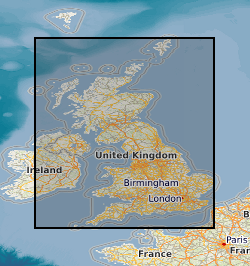
Data identifying landscape areas (shown as polygons) attributed with geological names and rock type descriptions. The scale of the data is 1:50 000 scale providing bedrock geology. Onshore coverage is provided for all of England, Wales, Scotland and the Isle of Man. Bedrock geology describes the main mass of solid rocks forming the earth's crust. Bedrock is present everywhere, whether exposed at surface in outcrops or concealed beneath superficial deposits or water bodies. The bedrock geology of Great Britain is very diverse and includes three broad classes based on their mode of origin: igneous, metamorphic and sedimentary. The data includes attribution to identify each rock type (in varying levels of detail) as described in the BGS Rock Classification Scheme (volumes 1-3 ). The bedrock has formed over long periods of geological time, from the Archean eon some 7500 million years ago, to the relatively young Pliocene, 58 million years ago. The age of the rocks is identified in the data through their BGS lexicon name (published for each deposit at the time of the original survey or subsequent digital data creation). For stratified rocks i.e. arranged in sequence, this will usually be of a lithostratigraphic type. Other rock types for example intrusive igneous bodies will be of a lithodemic type. More information on the formal naming of UK rocks is available in the BGS Lexicon of Named Rock Units. Geological names are based on the lithostratigraphic or lithodemic hierarchy. The lithostratigraphic scheme arranges rock bodies into units based on rock-type and geological time of formation. Where rock-types do not fit into the lithostratigraphic scheme, for example intrusive, deformed rocks subjected to heat and pressure resulting in new or changed rock types; then their classification is based on their rock-type or lithological composition, using visible features such as texture, structure, mineralogy. The data are available in vector format (containing the geometry of each feature linked to a database record describing their attributes) as ESRI shapefiles and are available under BGS data licence.
-
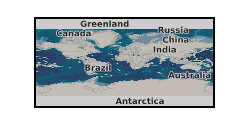
The year 2011 recorded the highest ever global consumption of energy, estimated at more than 12 billion tonnes of oil equivalent. Because of this, and despite increasingly widespread deployment of renewable energy generation, annual global emissions of greenhouse gases are continuing to rise, underpinned by increasing consumption of fossil fuels. Carbon capture and storage (CCS) is currently the only available technology that can significantly reduce CO2 emissions to the atmosphere from fossil fuel power stations and other industrial facilities such as oil refineries, steel works, cement factories and chemical plants. However, achieving meaningful emissions reduction requires wide deployment of large scale CCS and will involve long term storage of very large volumes of CO2 in the subsurface. Ultimately, if CCS were to be rolled out globally, volumes of injected carbon dioxide could become comparable, on an annual basis, to world hydrocarbon production. The most likely sites for CO2 storage are depleted oil and gas fields or saline aquifers. Understanding and monitoring geomechanical processes within different types of storage site is crucial for site selection, for achieving long term security of storage and for instilling wider confidence in the safety and effectiveness of CCS. In many cases depleted hydrocarbon fields have experienced strong pressure decrease during production which may have affected the integrity of the caprock seal; furthermore, CO2 injection into saline aquifers will displace large volumes of groundwater (brine). In all cases, as injection proceeds and reservoir pressures increase, maintaining the geomechanical stability of the storage reservoir will be of great importance. Understanding and managing these subsurface processes is key to minimising any risk that CO2 storage could result in unexpected effects such as induced earthquakes or damage to caprock seal integrity. Experience from existing large-scale CO2 injection sites shows that monitoring tools such as time-lapse 3D seismic, micro-seismic monitoring and satellite interferometry have the potential to make a significant contribution to our understanding of reservoir processes, including fine-scale flow of CO2, fluid pressure changes, induced seismic activity and ground displacements. The DiSECCS project will bring together monitoring datasets from the world's three industrial scale CO2 storage sites at Sleipner (offshore Norway), Snohvit (offshore Norway) and In Salah (Algeria) to develop and test advanced and innovative monitoring tools and methods for the measurement and characterisation of pressure increase, CO2 migration and fluid saturation changes and geomechanical response. A key element of the research will be to identify those storage reservoir types that will be suitable for large-scale CO2 storage without unwanted geomechanical effects, and to develop monitoring tools and strategies to ensure safe and effective storage site performance. In addition, our research will explore public attitudes to CO2 storage. Grant number: EP/K035878/1.
-
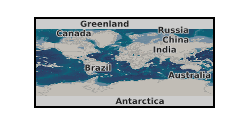
The data consists of a spreadsheet containing gas column height, CO2 content and estimated retained buoyancy pressures for Southern North Sea gas fields, based on published information. The data were obtained from published field records and papers on behalf of the 'Fault seal controls on CO2 storage capacity in aquifers' project funded by the UKCCS Research Centre, grant number UKCCSRC-C1-14.
-
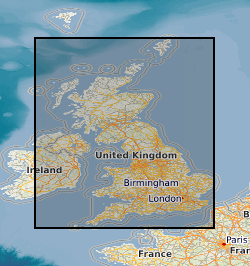
Data identifying linear features (shown as polylines) representing geological faults at the ground or bedrock surface (beneath superficial deposits). The scale of the data is 1:625 000 scale providing a simplified interpretation of the linear features and may be used as a guide at a regional or national level, but should not be relied on for local geology. Onshore coverage is provided for all of England, Wales, Scotland, the Isle of Man and Northern Ireland. Geological faults occur where a body of bedrock has been fractured and displaced by large scale processes affecting the earth's crust (tectonic forces). The digital data are attributed by fault type; two categories of fault are described in the data: fault at rockhead (representing normal dip-slip and strike-slip faults) and thrust fault (representing faults caused by compressive forces). The data has been generalised and shows only the location of major faults. The data are available in vector format (containing the geometry of each feature linked to a database record describing their attributes) as ESRI shapefiles and are delivered free of charge under the terms of the Open Government Licence.
-
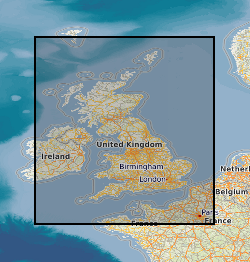
The Quaternary deposits thickness dataset is a digital geological map across the bulk of the UK Continental Shelf (UKCS), for areas up to a water depth of 200m, which shows the thickness of the deposits over bedrock in three categories: <5m, 5-50m, and >50m Quaternary cover. These depth bands were picked because they represent the horizons that have impact on offshore infrastructure deployment. The map is derived from (unpublished) BGS 1:1000000 scale Quaternary digital geological mapping. The map was produced in 2014 in collaboration with, and co-funded by, The Crown Estate as part of a wider commissioned project to assess seabed geological constraints on engineering infrastructure across the UKCS. The data are held by the BGS as an ESRI ArcGIS Shapefile.
-

These files contain ground penetrating radar (GPR) data collected from the glacier margins and forelands of Falljökull and of Kvíárjökull, south-east Iceland, between 2012 and 2014. The data were collected using a Sensors and Software PulseEKKO Pro GPR system. For each glacier the data are stored in folders that indicate the month and year in which the surveys were conducted. Each GPR profile has a Sensors and Software GPR (.DT1) file, and associated header (.HD) and GPS (.GPS) files. The .HD files (which can be opened as text files) give the parameters and equipment used for each profile. GPS files are not available for some of the profiles collected on Falljökull in April 2013 (due to damage that occurred to the GPS linked with the PulseEKKO Pro system). For these profiles start, finish, and mid profile positions were recorded using differential GPS, and locations of these profiles are instead given by GIS shapefiles in the relevant folders. These datasets have been used in the publications listed below. Further information relating to the data collection methodology can be found therein. Phillips, Emrys; Everest, Jez; Evans, David J.A.; Finlayson, Andrew; Ewertowski, Marek; Guild, Ailsa; Jones, Lee. 2017 Concentrated, ‘pulsed’ axial glacier flow: structural glaciological evidence from Kvíárjökull in SE Iceland. Earth Surface Processes and Landforms, 42 (13). 1901-1922. https://doi.org/10.1002/esp.4145 Phillips, Emrys; Finlayson, Andrew; Bradwell, Tom; Everest, Jez; Jones, Lee. 2014 Structural evolution triggers a dynamic reduction in active glacier length during rapid retreat: evidence from Falljökull, SE Iceland. Journal of Geophysical Research: Earth Surface, 119 (10). 2194-2208. https://doi.org/10.1002/2014JF003165 Phillips, Emrys; Finlayson, Andrew; Jones, Lee. 2013 Fracturing, block-faulting and moulin development associated with progressive collapse and retreat of a polar maritime glacier: Virkisjokul-Falljokull, SE Iceland. Journal of Geophysical Research: Earth Surface, 118 (3). 1545-1561. https://doi.org/10.1002/jgrf.20116 Flett, Verity; Maurice, Louise; Finlayson, Andrew; Black, Andrew; MacDonald, Alan; Everest, Jez; Kirkbride, Martin. 2017. Meltwater flow through a rapidly deglaciating glacier and foreland catchment system: Virkisjökull, SE Iceland. Hydrology Research, 48 (6). 1666-1681. https://doi.org/10.2166/nh.2017.205
-
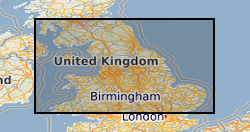
This is a simple Oracle table holding sample numbers, locations (UK National Grid) and illite crystallinity values measured for pelitic (mudrock) samples from Lower Palaeozoic terranes in the UK. Though intended for use by a BGS collaborative project with Birkbeck College, London, data may be made available to others on request.
-
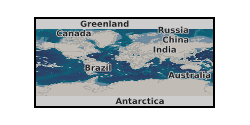
Full proposal for scientific drilling (852-CPP) 'GlaciStore: Understanding Late Cenozoic glaciation and basin processes for the development of secure large-scale offshore CO2 storage (North Sea)', submitted to Integrated Ocean Discovery Programme (IODP) April 2014. The proponent 'GlaciStore' consortium comprises research and industry organisations from the UK and Norway. The full proposal describes the relationship of the proposed research with the IODP science plan, regional background and previous work, and describes and illustrates three scientific objectives. The objectives are to investigate: glacial history and sedimentary architecture: fluid flow and microbial processes in shallow sediments; and the stress history and geomechanical models for strata that have experienced multiple glacial and interglacial cycles. The drilling and sampling strategy, standard drilling and logging operations, and the specialist measurements expected to be taken are described. Related initiatives and wider context of the proposed research also the initial and planned strategy for support from industry and government are outlined. The lead submitter, on behalf to the GlaciStore consortium is Heather Stewart, British Geological Survey (BGS).The 30 proponents from the UK and Norway (BGS, Institute for Energy Technology, Lundin Norway AS, SINTEF Energy Research, Statoil ASA, University of Bergen, University of Edinburgh and University of Oslo) and their expertise are listed. The full proposal is a pdf format file. This is restricted to the proponents for publication and to progress to a revised full proposal accepted for drilling by IODP. UKCCSRC Grant UKCCSRC-C1-30.
-
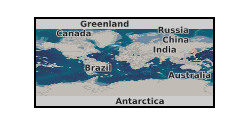
This is one of the early papers on CO2 storage. Natural analogues indicate that it is possible to dispose of CO2 underground in closed structures on deep aquifers. Disposal into depleted or exhausted hydrocarbon fields has many advantages, e.g. proven seal, known storage capacity, no exploration costs. Unfortunately there are very few hydrocarbon fields in the UK onshore area, and their total CO2 storage capacity is very low compared to annual UK CO2 production from power generation. The best aquifers for CO2 disposal onshore are the widespread Permo-Triassic sandstones. Further onshore potential exists in younger Mesozoic reservoirs. Offshore, disposal into depleted oil fields (where cost credits from enhanced oil recovery could be beneficial) or the Perno-Triassic gas fields of the southern North Sea, and nearby associated closures of the Triassic Sherwood Sandstone aquifer, appear to provide the best prospects. doi:10.1016/0196-8904(93)90038-C. http://www.sciencedirect.com/science/article/pii/019689049390038C
-

The BGS collection of 1:10 560 / 1:10 000 National Grid Series geological maps. These maps are based on the Ordnance Survey National Grid series of maps, which are defined by the 10 km intervals of the larger 100 km square identified by a specific two-letter code. Each map is thus denoted by a unique reference, e.g. SP 29 NW. SP=100 km square; 29=10 km square; NW=5 km square. Since field mapping is generally undertaken at the scale of 1:10 000 (or equivalent), these maps are the largest-scale main series of geological maps that BGS holds. A small number of remote areas were mapped at 1:25 000 scale, the subsequent maps are also at 1:25 000 scale and are included in this series. The equivalent to the National Grid Series prior to the 1960s is the County Series (at 1:10 560 scale). In the 1960s, this series started to be replaced by 6 inches to 1 mile (1:10 560 scale) National Grid sheets based on the four quadrants (NW, NE, SW, SE) of a 10 km Ordnance Survey National Grid square. Areal coverage provided by the National Grid series of large-scale maps is limited in extent and the preceding County series of six-inch maps can still be the most up to date map available for some areas. Geological maps represent a geologist's compiled interpretation of the geology of an area. A geologist will consider the data available at the time, including measurements and observations collected during field campaigns, as well as their knowledge of geological processes and the geological context to create a model of the geology of an area. This model is then fitted to a topographic basemap and drawn up at the appropriate scale, with generalization if necessary, to create a geological map, which is a representation of the geological model. Explanatory notes and vertical and horizontal cross sections may be published with the map. Geological maps may be created to show various aspects of the geology, or themes. The most common map themes held by BGS are solid (later referred to as bedrock) and drift (later referred to as superficial). These maps are, for the most part, hard-copy paper records stored in the National Geoscience Data Centre (NGDC) and are delivered as digital scans through the BGS website.
 NERC Data Catalogue Service
NERC Data Catalogue Service